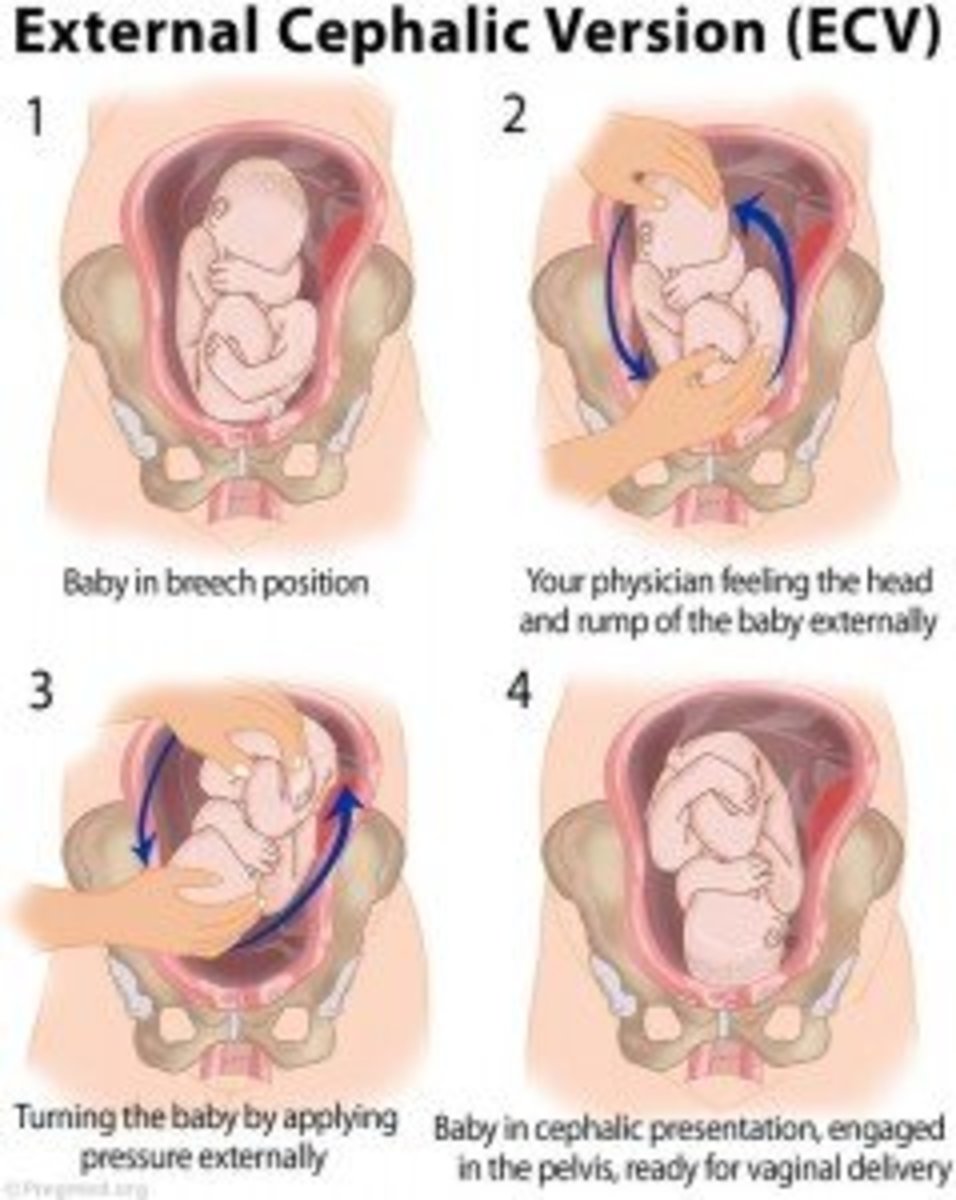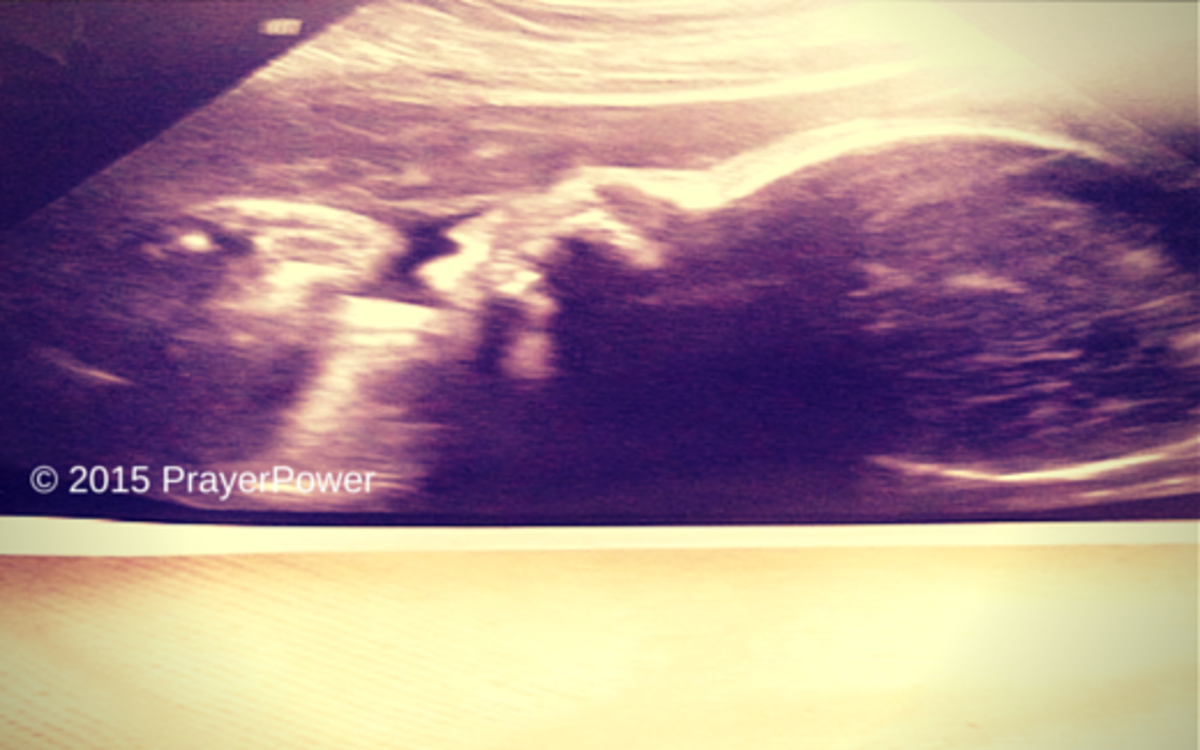- HubPages»
- Health»
- Women's Health»
- Pregnancy
5 Tips Before, During, and After Pregnancy
Silly me thought everything would fall into place once the delivery was over and I knew my son was healthy. But the confusion really began during delivery. When I was expecting again, I found myself thinking about all the practical things I wish I knew for my delivery and short two-day stay after delivery. With two children in tow now, 31 months and 16 months, I want to pass along the information typically spoken in hushed voices if at all. I’m bringing some important pointers to light so you won’t be blindsided like I was. This article is not for the faint of heart or conservative. The really gruesome details are left for links to explain and show. Read on at your own discretion.
1. Be Proactive
Case 1:
Of course there is no textbook version of delivery. However, having no previous children, I wanted to make sure I followed all of my midwife’s instructions. The midwife on duty made it very clear in previous visits that if she was on duty when I delivered (my OB/GYN office has several midwives) that I not call her until my contractions were five minutes apart for an hour. Well five minutes apart came and went in just half an hour. So, I waited a little longer. Maybe my contractions were not as regular as I thought. I kept studying my chart for my previous contractions and realized that after only half an hour my contractions went from five minutes apart to four. I did not want to upset my midwife, so I waited a little longer to see if I would go back to five minutes. I actually went down to three minutes apart. Scared to wake my husband—who now only had an hour of sleep since getting off of work—and upset my midwife, I called the hospital. I read off my times to her, and she nonchalantly said I could come in. By the time the nurse checked me in to triage and ignored me for about another hour, my midwife finally checked me. I was already between seven and eight centimeters dilated. Everything became a flurry of activity then. The point is: trust your instincts and be proactive.
Case 2:
There were many things I assumed would naturally happen after giving birth. For example, I know people who still have their footprints from after delivery. However, once my son was born and they were taking all his measurements, I noticed they were about to wipe his feet clean without acknowledging if I wanted his footprints. Luckily, I had a sheet prepared for his baby book with spaces for his footprints—I am anal in that way. In my post-labor stupor, I managed to remember something as little as asking for my own set of footprints.
Case 3:
Believe it or not, once you have your baby, you have a natural mother’s/father’s intuition. Babies are taken for two main reasons, tests and if the mother “needs a break.” When nurses take your baby for a battery of tests, they promise to bring your baby back when done. Often, they forget. I was hesitant to call the nurse’s station. But I also did not want to be viewed as taking a break from my one-day-old baby. “She’s overprotective already” is what I imagined them saying behind my back if I kept calling them. After about an hour passed, my husband and I would look at each other wondering who would make the call this time. Usually the tests were done a while ago and the nurse simply forgot to bring my son back. So, again, be proactive or else you will end up like me: getting out of bed and walking down the hall to find your baby with the nurses saying, “Didn’t she just have a baby!” and scratching their heads.
2. Be Flexible
So you already know I had a pretty fast delivery. But in the midst of not being proactive, I ended up not getting what I wanted. I had to be flexible and adjust to the unexpected. The biggest adjustment I had to make dealt with pain medication. I had a lovely green folder with my labor preferences (signed in triplicate) among other items I thought were important. Most of my detailed work was nullified when the hospital basically ignored me because they were overloaded with deliveries that night—it was a dark and stormy night, literally. And since I was a first time mother, they figured I could not be as far along as I thought I was. As my contractions grew more intense and closer together, I imagined following my labor preference sheet. I would first get in the Jacuzzi to alleviate pain. If the pain became more unbearable, I wanted intravenous medication like promethazine-Phenergen. When it was really crunch time, I would get a Pudendal block instead of an Epidural. In the mean time, I knew I needed an I.V. with the antibiotic for Group B Strep which I tested positive for earlier in the pregnancy. While this was occurring, I would receive as much massaging as necessary to avoid having an episiotomy. Finally, when the time came, my husband would cut the umbilical cord.
None of the above happened. Once my midwife and the nurses realized I really was advanced in my delivery, everything kicked into high gear so fast that I got nothing I wanted. Instead, I was told to get up right then and walk—yes, walk!—to the labor and delivery room. My midwife looked at my labor preferences and said, “You’re not getting any medication.” After picking my jaw up from the floor, I cried because all I could think about was the pain intensifying. My midwife explained that I made it through the worst of it with no medication, so I was going to have a truly natural birth. Medication at this point would slow down the delivery. I wanted to be beamed to the moon with medication, not alert for all the pain. Everything happened so fast that I did not get the antibiotic (since I was ignored at first in triage) because all the nurses were fighting for space around me to hook up monitors, get me on oxygen and ask questions like who was my pediatrician. This meant my son was at risk, and after delivery was monitored regularly to see if Group B Strep was passed along. There was no time for massage because in only four pushes—no joke—my son was here (I have an herbal trick to thank for that, but that’s another article! But, midwives are awesome for their natural techniques). As for the cutting of the cord, I found out later my husband wasn’t even asked because they needed to get my son out so fast and the cord from around his neck. Because of the fast delivery, I ended up with an episiotomy, which actually was the most painful part of the delivery for me and continued to be afterwards. The upshot was that my son was alert, healthy and scored a 9.9 on the Apgar.
Did You or Do You Plan to Breast Feed?
3. Breastfeed
You will feel proud every time you say, “I am breastfeeding.” And of course there are numerous benefits--so much so that it goes beyond the scope of this article. But the best-laid plans can go belly-up, no pun intended, with the confusion and details that breastfeeding entail. Something I wish I knew then was that I should have put a card in my son’s bassinet stating in bold letters that he was breastfeeding. For all the times they took my son, I think at times they may have given him formula which really confused his feeding schedule and led to the whole “wet versus dry” diaper discussion covered later.
Many women give up on breastfeeding, and I probably would have been one of them. My son latched on and drank, but my chest was becoming unbearably sore from all the sucking. A device that many women do not know about is the nipple shield. There are mixed opinions about this little piece of silicone. But it was a lifesaver for me. It was enough of a barrier during feedings that I was able to keep breastfeeding exclusively. And my son was not picky about how he got his food.
Your breast will change just as much when you were going through pregnancy as when you are breastfeeding. Milk will release when your, or sometimes another, baby cries. You may form knots in your breasts if you do not pump or feed regularly or enough milk does not release. This became extremely painful when my son was finally asleep but all the babies down the hall were crying. I would wake up out of nowhere due to the painful lumps that formed while I slept or were starting to form because my subconscious heard crying. Be sure to know when the pain seems too extreme. It may mean you have mastitis, a blocked milk duct.
4. Know Wet vs. Dry Diapers
One of several things you may not anticipate as a first time parent is how concerned the nurses are with your baby’s bowl movements (BMs). You will become just as concerned. They will ask several times during the day how many wet and dry diapers your baby had. You may even have to fill out a chart like I did. Apparently, my son was not having enough wet diapers. They immediately figured he was not getting enough breast milk. So, they kept calling for the lactation specialist to talk to me. And every time, she would say, “You, again.” While it was frustrating, it almost became comical. About as soon as she came in she was leaving. “You’re fine. Why do they keep calling me?” The lactation specialist had to tell the doctors and nurses several times that she watched me feed my son until he was “milk drunk” and then saw me pump all the milk that was left after my son was finished. I had milk for days, so much so that my colostrum turned into my real milk supply the second day of my stay. But for a few feedings they had me pump into a bottle and then fill up a syringe with my colostrum. My son was fed via the syringe so they were sure he was getting enough food.
On the second day a nurse showed us a trick to really determine if my son wet his diaper. She took a square of gauze and placed it right between his penis and the front of the diaper. Since babies sometimes do not urinate much, it does not necessarily soak the diaper (even if they are Pampers Swaddlers Sensitive with the color change strip). So, we could easily check the gauze and see if it was wet. With no technology we were able to give the nurses an accurate count. Bowel movements may not seem important at first. Just know that doctors base if they will do a procedure or not on if your child is having “normal” bowel movements and if they seem alert or lethargic. I know because they initially canceled my son’s circumcision until the lactation specialist gave the all clear.
5. I’m Getting Checked Too?: Grin and Bear It
As much as your baby gets checked, so will you. The first checks are your urinations after delivery (sounds like the wet versus dry section again, I know). After passing the first check, the nurse will show you how to change yourself after going to the bathroom. Using the lavatory after delivery is no quick or easy feat. You have to wipe a certain way, rinse with warm water from a squirt bottle, use wipes or spray, change your pad each time, apply cream to the pad in certain instances, and then make sure everything is centered in your hospital issued mesh granny underwear. If you had an episiotomy, you have to check and see if your stitches have completely dissolved or not by searching for any remnants of black string. They also wait to see your first bowel movement. If you do not produce number two, pun intended, you do not go home. However, this was only the case for my son and not when I had my daughter. So I guess they got tired of waiting around for women to do their business. A couple of times a day a nurse or your practitioner will press your abdomen to make sure your innards are settling back into place. At that time they will also make you roll over so they can check your pad and episiotomy if you had one.

You'll Thank Me
Every pregnancy and delivery is different. But having these tips will let you know that it is okay to trust your gut (or slimming belly) and newfound instinct, if need be, despite being new to the experience.



